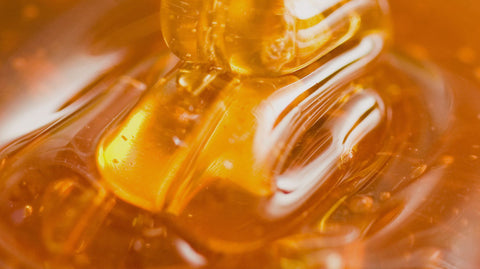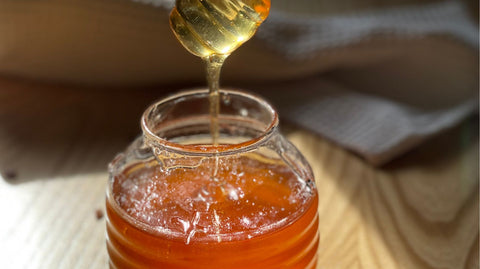Not all honey is created equal. While most commercial honeys are blended from multiple sources and stripped of their natural complexity, single source honey offers something far more authentic - a snapshot of the land it comes from.
Much like wine or coffee, honey carries the unique imprint of its environment. From the blossoms the bees visit to the climate and soil surrounding the hive, every element contributes to a flavor profile that’s deeply rooted in place.
This is the magic of single source honey: it’s not just sweet, it tells a story. Each jar is a sensory journey into a specific ecosystem. In this blog, we’ll explore how single source honey captures the flavor of the land, and why it matters for taste, sustainability, and our connection to nature.
What Is Single Source Honey?
Single source honey is honey that comes from one geographic location or a single type of floral source, rather than being blended from multiple regions or plant varieties.
This means the bees have primarily foraged from the same environment, resulting in honey with distinct flavor, aroma, and color. Unlike mass-produced honey, which is often filtered, heated, and combined with other batches to create uniformity, single source honey retains the unique characteristics of the area and season in which it was made.
This purity gives single source honey a depth and richness that’s impossible to replicate in commercial blends. It also allows for greater transparency, you can trace where it was harvested and what plants contributed to its profile.
For those seeking authenticity and a closer connection to their food, single source honey offers a truly artisanal experience. It’s not just about sweetness; it’s about capturing the essence of a place in each golden spoonful.
How Environment Shapes Flavor
The environment plays a powerful role in shaping the flavor of single source honey. Everything from the types of flowers in bloom to the region’s soil composition, rainfall, and temperature can influence a honey’s taste, texture, and color.
Bees forage within a few miles of their hive, gathering nectar from the plants available in that specific window of time. As a result, honey harvested from one location in early spring will taste entirely different from honey collected in the same spot during late summer.
This environmental variation is what gives single source honey its distinctive character and makes each jar a reflection of the land and season it came from. Ames Farm, a well-known producer of single source honey in Minnesota, offers a wide variety of flavors based on the microclimates and floral sources near each hive.
Their honeys are a perfect example of how nature crafts complexity in each small batch. Here are a few examples of flavor notes found in Ames Farm honey varieties:
- Basswood Honey: light, minty, with a hint of citrus
- Wildflower Honey: floral, earthy, and slightly spicy
- Sweet Clover Honey: mild, buttery, with vanilla undertones
- Buckwheat Honey: dark, bold, malty, and molasses-like
- Alfalfa Honey: mild and grassy with a clean finish
And many more unique, high-quality, and delicious single source honey ethically harvested. Each variety tells the story of the plants and conditions that shaped it, proof that honey is more than just sweet; it's a taste of the natural world.
Why Choose Single Source Honey?
Single source honey offers a level of purity and traceability that sets it apart from mass-produced blends. Harvested from a single location or floral source, it reflects the distinct characteristics of the local environment, something that’s lost in commercial honeys that are heavily processed and blended for uniformity. With single source honey, you get a product with integrity, crafted by bees working in harmony with nature.
Beyond its origin, single source honey delivers a more vibrant and complex flavor. Each jar captures the subtle notes of the plants the bees visited. These naturally occurring flavor profiles provide a gourmet experience for those who appreciate real, unaltered food, and support small-scale, sustainable beekeeping in the process.
It also retains more of honey’s natural health benefits. Because single source honey is minimally filtered and never overheated, it preserves essential enzymes, antioxidants, and antibacterial properties.
These nutrients can help boost the immune system, soothe sore throats, aid digestion, and even assist with minor wound healing. For those seeking both taste and wellness, single source honey is a sweet, functional choice.
Meet the Makers: The Role of the Beekeeper
Behind every jar of single source honey is a beekeeper who plays a vital role in preserving its quality and character. These artisans do more than harvest honey, they carefully manage hive health, monitor floral cycles, and time their collections to ensure the bees are drawing nectar from specific sources. Their hands-on approach helps protect the integrity of the honey, allowing it to retain the natural flavors and nutrients that make single source varieties so distinctive.
Unlike large-scale producers, single source beekeepers often work in small batches, giving each hive the attention it needs. They avoid excessive filtering or heating, ensuring the final product stays as close to nature as possible. Their deep understanding of local ecosystems, bee behavior, and seasonal bloom patterns allows them to produce honey that truly reflects a specific time and place. In many ways, beekeepers are not just producers, they’re stewards of flavor, land, and life.
A Sweet Way to Connect With Nature
Single source honey offers more than sweetness, it delivers a sense of place in every jar. Each jar tells a story shaped by the land, the season, and the flowers that were in bloom. From the environment that shapes its flavor to the hands of the beekeeper who carefully harvests it, this type of honey is a testament to nature’s complexity and the value of small-scale, intentional production.
Choosing single source honey means savoring something authentic, traceable, and rich in both taste and nutrients.
Ames Farm exemplifies this philosophy by producing over a dozen single source honeys each year, each one tied to a specific location and floral bloom in Minnesota. Their commitment to transparency, craftsmanship, and bee health allows customers to experience the true flavor of the land.
Whether you’re a food lover, health-conscious consumer, or someone who values supporting local producers, single source honey from places like Ames Farm is a delicious way to connect with nature, one spoonful at a time.
FAQs About Single Source Honey
What exactly is single source honey?
Single source honey is honey that comes from one hive location and is typically derived from bees foraging one dominant floral source or a specific area. Unlike commercial blends that mix honey from multiple sources and regions, single source honey maintains the unique taste, texture, and color reflective of the local environment and season where it was produced.
How is single source honey different from regular honey in stores?
Most store-bought honey is blended from various sources, often heavily filtered and heated to improve shelf life and create a uniform appearance and taste. This process removes many of the natural enzymes and nutrients found in raw honey. Single source honey, on the other hand, is minimally processed and retains its original character—including flavor, aroma, and health benefits, making it more authentic and traceable.
Why does single source honey taste different from batch to batch?
Because it’s harvested from bees that forage a specific area at a specific time, single source honey reflects natural variations in season, rainfall, temperature, and floral availability. Even hives located a few miles apart can produce honey with noticeably different flavor profiles. These differences are part of what makes single source honey so special, each jar offers a unique “taste of place.”
Is single source honey better for your health?
Yes, it can be. Since single source honey is usually raw and minimally processed, it retains more of the beneficial compounds found naturally in honey, including antioxidants, enzymes, vitamins, and antibacterial properties. These elements can support immune health, soothe sore throats, and aid digestion. It’s also less likely to contain additives or syrups that are sometimes found in commercial blends.
How should I store single source honey?
tore honey in a tightly sealed container at room temperature, away from direct sunlight and moisture. There’s no need to refrigerate it. Over time, honey may crystallize, which is a natural process and doesn’t affect its quality. If crystallized, simply warm the jar gently in a pan of warm water to return it to its liquid state.



